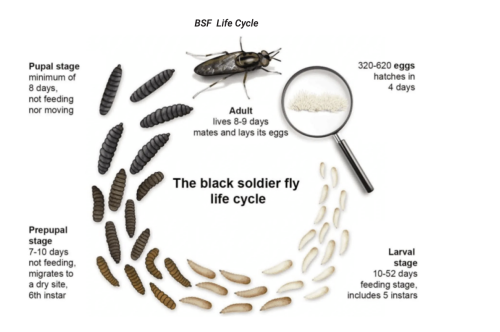MAIZE FARMING IN KENYA
Maize Farming in Kenya
Maize farming is a cornerstone of agriculture in Kenya, playing a vital role in ensuring food security and contributing to the national economy. This guide explores the various aspects of maize farming, including suitable varieties, planting techniques, nutrient management, pest and disease control, irrigation, harvesting, and marketing. It also highlights the challenges and opportunities in maize farming and outlines future directions for the sector.
Climate and Soil Requirements for Maize Farming in Kenya
Climate Requirements
Maize thrives in warm climates with temperatures between 10-15°C for germination and growth. In Kenya, maize is best grown in regions with altitudes ranging from 900 to 2,500 meters above sea level. These areas typically receive an annual rainfall of 600 to 1,200 mm, well-distributed throughout the growing season. However, maize can also be cultivated in drier areas with the aid of irrigation.
Soil Requirements
Maize grows well in a variety of soils but performs best in well-drained, fertile soils with a pH range of 5.5 to 7.5. Soils rich in organic matter are ideal as they enhance fertility and water retention. In high-rainfall areas, proper drainage is essential to prevent waterlogging, which can hinder crop growth. Soil testing is recommended to assess nutrient levels and guide fertilizer application.
Varieties of Maize Cultivated in Kenya
Kenya’s diverse ecological zones support the cultivation of various maize varieties, each suited to specific conditions:
-
Hybrid Maize: Known for higher yields, pest resistance, and drought tolerance. Popular varieties include H624, H614, and H512.
-
Open-Pollinated Varieties (OPVs): These are naturally pollinated and adaptable to a wide range of conditions. Examples include Katumani, MH18, and PH4.
-
High-Altitude Maize: Adapted to cooler climates and higher elevations. Varieties like Longe 5, H614, and H621 are commonly grown.
-
Quality Protein Maize (QPM): Enriched with higher protein content, addressing malnutrition. Popular QPM varieties include Mwaiwathu, Makueni, and KDV4.
Farmers select varieties based on factors such as soil type, climate, market demand, and farming practices.
Land Preparation for Maize Farming
Proper land preparation is crucial for optimal maize yields:
-
Clearing the Land: Remove bushes, trees, and grass manually or mechanically to create a clean planting area.
-
Tillage: Loosen the soil to create a fine seedbed using tools like disc harrows or cultivators.
-
Soil Fertility Enhancement: Apply organic fertilizers such as manure or compost to improve soil fertility.
-
Soil pH Adjustment: Ensure the soil pH is between 6.0 and 7.5 by adding lime or sulfur if necessary.
-
Ridge and Furrow System: In areas with heavy rainfall, use ridges for planting and furrows for drainage to prevent waterlogging.
Planting Techniques for Maize Farming
-
Timing: Plant at the onset of the rainy season to ensure adequate soil moisture.
-
Spacing: Maintain 75 cm between rows and 30 cm between plants for optimal growth.
-
Depth: Plant seeds at a depth of 5-10 cm to ensure proper germination.
-
Seed Rate: Use 8-10 kg of seeds per acre, adjusting based on variety and soil fertility.
-
Planting Methods: Options include drilling (furrow planting), broadcasting (scattering seeds), and dibbling (hole planting).
-
Pre-Planting Treatment: Treat seeds to enhance germination and protect against pests and diseases.
Nutrient Management in Maize Farming
Maize requires balanced nutrition for optimal growth:
-
Basal Fertilizer Application: Apply phosphorus-rich fertilizers during planting to support root development.
-
Top Dressing: Use nitrogen-based fertilizers 2-3 weeks after planting to promote vegetative growth.
-
Foliar Fertilizers: Apply foliar sprays during early growth, flowering, and grain-filling stages to boost plant health and yield.
Pest and Disease Control
Maize is vulnerable to pests like fall armyworms, stalk borers, and aphids, as well as diseases such as Maize Lethal Necrosis Disease (MLND) and maize smut. Integrated pest management strategies, including the use of resistant varieties, biological control, and cultural practices, are essential for minimizing losses.
Weed Management
Weeds compete with maize for nutrients, water, and light. Effective weed control methods include:
-
Manual Weeding: Remove weeds using hoes or hand tools.
-
Herbicides: Use pre- and post-emergence herbicides to control weeds efficiently.
-
Timely Weeding: Ensure fields are weed-free until the tasseling stage to prevent yield losses.
Harvesting, Post-Harvest Handling, and Storage
-
Harvesting: Maize is ready for harvest 3-4 months after planting for short-season varieties and up to 10 months for long-season varieties. Harvesting can be done manually or using mechanized equipment.
-
Drying: Dry maize thoroughly to prevent fungal growth and insect infestation.
-
Storage: Store maize in clean, dry, and well-ventilated facilities. Use airtight containers or treated bags to protect against pests and moisture.
Challenges and Opportunities in Maize Farming
Challenges
-
Climate change and erratic weather patterns.
-
High input costs and limited access to quality seeds.
-
Pests, diseases, and post-harvest losses.
-
Inadequate storage facilities and market access.
Opportunities
-
Adoption of climate-smart farming practices.
-
Development of drought-tolerant and pest-resistant varieties.
-
Value addition through processing maize into flour, animal feed, and other products.
-
Access to regional and international markets.
Conclusion and Future Directions
Maize farming is a vital activity in Kenya, supporting food security and livelihoods. Despite challenges such as climate change, pests, and high input costs, opportunities exist for growth through sustainable practices, technological adoption, and market expansion. By addressing these challenges and leveraging opportunities, maize farming can continue to play a pivotal role in Kenya’s agricultural sector and economic development.
This guide provides a comprehensive overview of maize farming in Kenya, equipping farmers with the knowledge to improve productivity and profitability while contributing to national food security.


